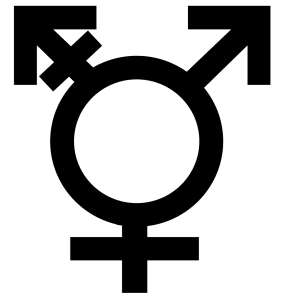It’s Pride Month! And this month, we’d like to do more than just post a picture of a Pride flag – not that there’s anything wrong with showing your support! We’re all for that, but we’d also like to take this opportunity to examine the state of things when it comes to LGBTQ individuals in the workplace in the 2020s. We know we’ve made significant progress, but what challenges are we still facing? And what more can we do to bring more equality into our workplaces? After all, that will benefit everyone in the long run!
How Far We’ve Come
There was a time when being out anywhere, in any job, could mean facing real problems, including unchallenged discrimination and termination. But we’ve made great legal strides in the last few decades, and there are now laws on the books that protect the rights of LGBTQ employees. These laws include:
- Title VII: Federal law, supported by the Equal Employment Opportunity Commission, and now, once again, enforced by the Department of Justice. This law:
-
-
- Says that discrimination or harassment based on sex stereotypes about how a man or woman should behave violates the law
- The Supreme Court in 2020 concluded that it includes protection based on sexual orientation and gender identity
-
- State laws:
-
-
- 20 states (plus D.C.) prohibit discrimination based on sexual orientation and gender identity
- 2 states prohibit discrimination based on sexual orientation only
- 11 states prohibit discrimination based on sexual orientation and/or gender identity against public employees only
-
- Local laws:
-
- 227 Cities, Towns, Counties, and Townships currently prohibit discrimination based on sexual orientation and/or gender identity
Only 6 states have no protections at the state or local level (Alabama, Arkansas, North Carolina, North Dakota, South Dakota, Tennessee)
In addition, companies are getting better at making their own voluntary policies that help to foster an inclusive workplace and stamp out discrimination. For example, in 1999 72% of Fortune 500 companies included sexual orientation in their nondiscrimination policies, and only a couple of them included gender identity. Today, 89% of such companies include sexual orientation, and 66% prohibit discrimination based on gender identity. Many federal contractors have also enacted policies on LGBT workplace equality: of the largest 50 federal contractors, 86% prohibit sexual orientation discrimination and 61% prohibit discrimination based on gender identity.
And, according to the Human Rights Campaign’s Corporate Equality Index, in 2015 a record number of 366 businesses achieved a top rating of 100%, while in its initial year in the early 2000s, only 13 businesses achieved the highest rating. To achieve a 100% rating, the company must have, among other requirements, an equal employment opportunity policy including sexual orientation and gender identity or expression in place, equivalent spousal and partner benefits, accompanied by transgender-inclusive health insurance coverage, and provide competency training and have either an employee group or a diversity council.
All of this means that, on the federal, state, local, AND private sector levels, things are improving when it comes to combatting discrimination in the workplace. But how are things in practice?
What Challenges Do LGBTQ Employees Face at Work?
Despite all the good intentions out there, things certainly aren’t all rainbows (no pun intended) and unicorns when it comes to how LGBTQ employees actually experience their workplaces. In fact, according to surveys conducted by Out Now Consulting, more than 40% of lesbian, gay and bisexual individuals, and almost 90% of transgender persons, have experienced discrimination in the workplace, harassment or mistreatment by co-workers.
That’s a lot of people who do not feel like valued members of their team, and who will end up stressed and unhappy. And while these employees’ humanity is the most important thing at stake, this state of affairs will also affect your business, when these stressed and unhappy employees become unproductive or decide to leave their jobs.
But it’s not just dealing with the decision to come out at work, and the microaggressions that can occur if they do come out, or the stress of having to live as someone other than who they are if they don’t come out. There are so many signs of heterosexual, cisgender privileges and assumptions at the workplace, and it can be stressful to deal with these things AND to be forced to be the ones to speak out against them . For example, some things to watch out for that can often be baked into the ethos of a workplace include:
. For example, some things to watch out for that can often be baked into the ethos of a workplace include:
- Lack of gender-neutral restroom facility or inadequate signage.
- Employment/human resource documents with only two gender options: “male” or “female.”
- Lack of access to gender-affirming healthcare, life insurance, disability, and other employment benefits.
- Inadequate or no employment health insurance coverage for LGBTQ significant others and dependents.
- Inadequate or no employment life/disability insurance coverage for LGBTQ significant partners and dependents.
We need to remember that all of the above still exists; all the laws and equality indices we can think of aren’t going to make all of the issues facing real people go away overnight. It’s incumbent on everyone to change the culture, but the biggest responsibility lies with employers, who need to lead on this front, and not just because it’s the right thing to do. It’s also the right thing to do for your business.
The Value of Diversity
Equality and diversity are important goals in and of themselves, and creating a workplace that is inclusive for all is without a doubt great for employees. According to a survey conducted by the Williams Institute, The Business Impact of LGBT-Supportive Workplace Policies, LGBT employees who spend considerable time and effort hiding their identity in the workplace experience higher levels of stress and anxiety, resulting in health problems and work-related complaints. This means that an LGBTQ-friendly workplace will lead to improved health, increased job satisfaction, better relationships with co-workers and supervisors, and greater work commitment among LGBTQ workers.
But there is also actually concrete evidence that an equal, diverse, and inclusive workplace is a more effective, productive, and profitable workplace. Business owners who excel at equality have:
- Employees who are more likely to remain in their current positions (especially if they’re able to be out in the workplace), meaning they save money on recruitment and training
- Lower healthcare costs, because their employees tend to be in better health
- An easier time attracting customers who are eager to do business with socially responsible companies
- More loyal customers – In a national survey conducted by Harris Interactive in 2011, nearly nine out of ten (87 %) LGBT adults said they are likely to consider a brand providing equal workplace benefits. 23% of LGBT adults have switched products or services because a different company was supportive of the LGBT community, even if a brand was costlier or less convenient
- A much bigger talent pool to choose from
- Less stressed, more productive employees
So, while you can’t single-handedly change our culture, you can start with your workplace, and keep the momentum of equality, diversity, and inclusivity going. You can have an LGBTQ-friendly recruitment process, a workplace that is tolerant, except when it comes to intolerance, and a good eye for anything that keeps your employees from feeling like equal parts of your team. With the help of you and other good employers, we CAN get past LGBTQ discrimination at work, and keep everyone’s businesses growing at the same time.